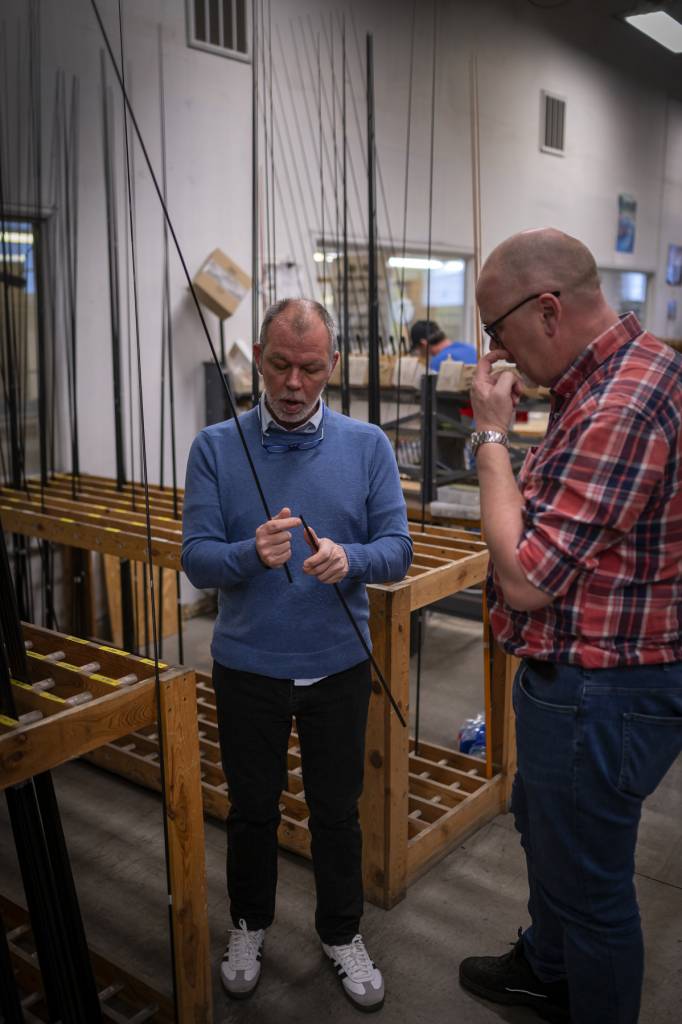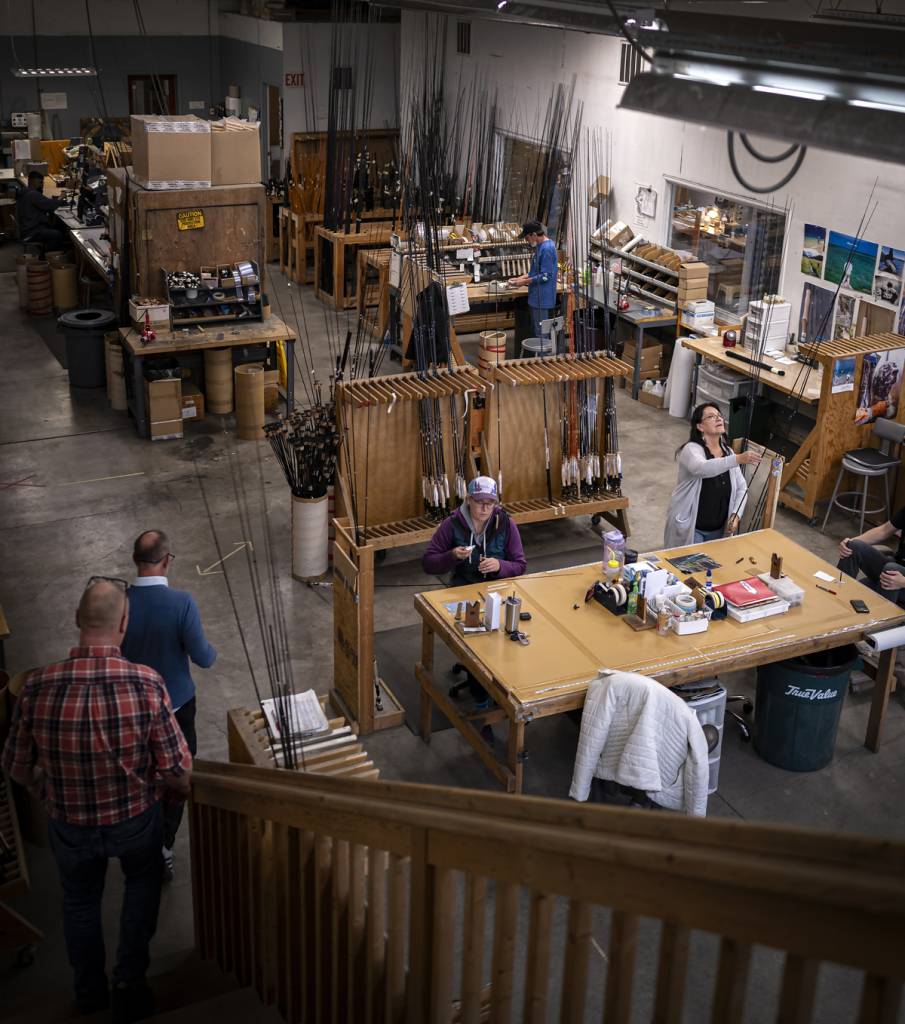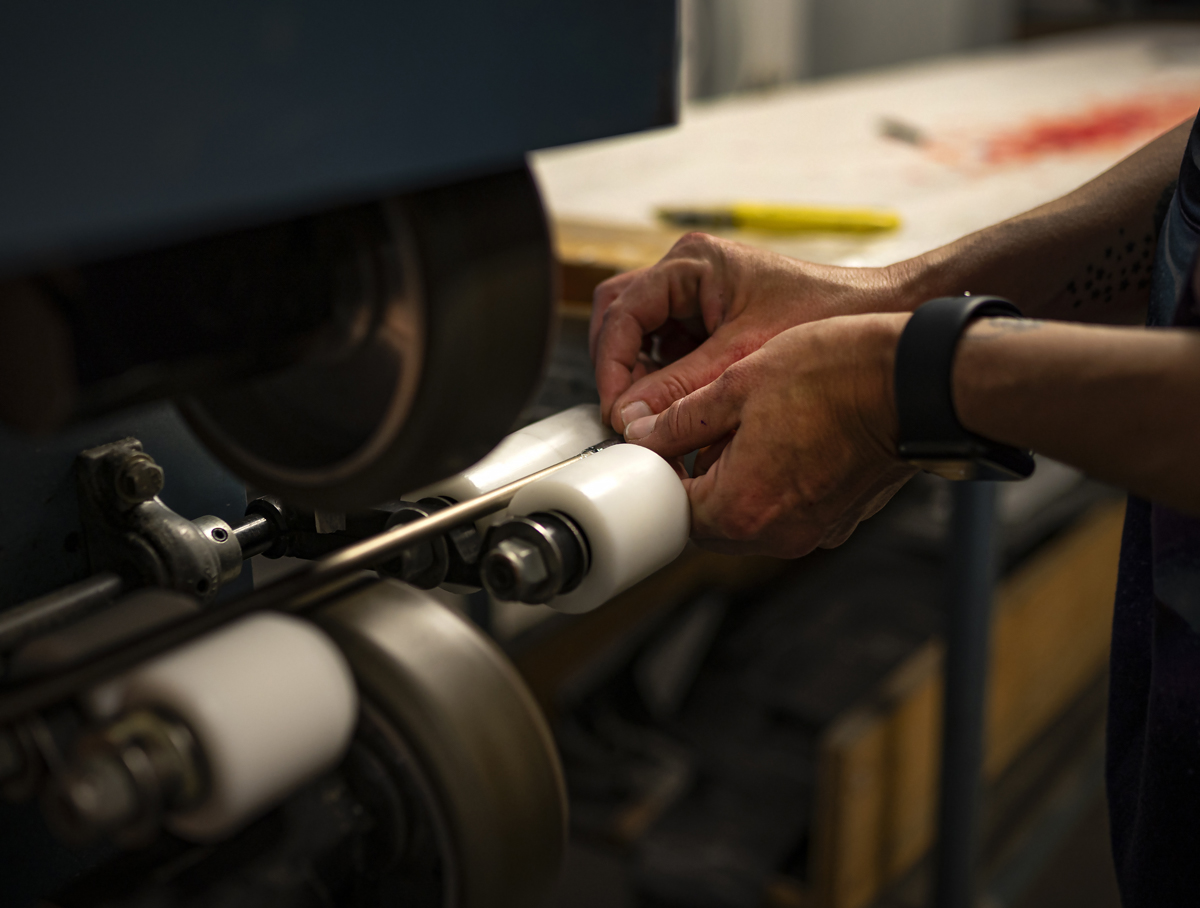Jim Bartschi comes from a family of anglers – mostly out of Montana. He spent his childhood summers there hiking and fly fishing with his grandparents, parents, and cousins. And as soon as he could drive a car, he was heading to his home rivers in Northern California to fish for trout and steelhead. Now, Jim is the managing director and chief rod designer for world-renowned Scott Fly Rods – a job that keeps him sharp and motivated. We’ve sat down with Jim for a conversation about rod design, fly fishing, and how one gets to be a part of the fly fishing industry.

Can you tell us a bit about your background and how you got into fly fishing?
I come from a family of anglers. Most generations of my family are from Montana. I spent childhood summers there hiking and fly fishing with my grandparents, parents and cousins.
As soon as I could drive a car, I was heading to my home rivers in Northern California to fish for trout and steelhead.
At what point in time did you get involved in fly rod design and why?
I got involved with rod design working with Harry Wilson and Larry Kenney at Scott Fly Rods. There really aren’t many other ways than having your foot in the door of a rod company.



You’re now the president of Scott Fly Rod Company. How did you end up where you are today and why?
Many years of hard work! It started out as a part time job in college I was happy to have because it was a fly fishing job that was local in Berkeley, CA, was much easier than driving 3.5 hours to Redding to guide on the Sacramento River, and involved learning about making fly rods.
I had no idea at the time it was the start of a journey that’s been going on for nearly 30 years.
What is the most exciting thing about working for Scott Fly Rod Company?
Getting to come to work every day doing something you love.
Scott has done one thing, and one thing only, for the past 45 years. Handcraft high performance fly rods. That’s unique and is a testament to our level of commitment and dedication. Being part of a team with such a singular mission and vision is really satisfying.
With regards to materials, design and craftsmanship, what is the working philosophy of Scott Fly Rod Company?
Our goal is to make the best fly rods that can be made. That informs every decision we make and action we take regarding sourcing materials and components, the process we use to handcraft every rod, and our approach to design.
Scott rods are still made-in-the-US; something that is rare in this time and age where the Far-East is the world’s factory. Why is it so important to you to make rods in the US?
What’s important to us is that we make every rod we sell.
The US has a long history with fly fishing and has made many contributions to the sport, and it has fantastic public access to some of the finest and most diverse fisheries on the planet, so it is fantastic that we have the opportunity to handcraft our rods in Colorado. But, the geographic location isn’t the most important part. Our team probably wouldn’t complain if we had to move to Argentina or the Bahamas to do the work.
As long as we personally get to handcraft every Scott rod, we’re happy.





You’ve designed a long list of legendary fly rods. Are you still hands-on when it comes to the production of new fly rods?
Absolutely. That’s still one of my favorite parts of my job. I like coming home with graphite under my fingernails. Some of our rod builders have been with us over 20 years, so it’s always fun to work with the team on the shop floor learning new tricks from one another.
For the fly fishers out there, who still haven’t tried a Scott fly rod, why should they try one?
Scott usually isn’t the first fly rod someone owns but it’s often the last. Experienced anglers often talk about on-the-water performance of their Scott rods and what great fishing tools they are.
We don’t advertise the most, or distribute our rods everywhere, and we don’t make entry level fly rods. That is self-limiting in terms of the audience we reach, but we’re fine with that. We don’t need to be all things to all people. If we can handcraft great fly rods for anglers who are really passionate about fly fishing, we’ve accomplished our goal.
You had a series of fiberglass rods that came out a few years ago; the F-Series. Can you tell us a little bit about the rod series, and why glassfiber rods still have their place in the market?
Glass isn’t a retro material for us, and we’re not jumping on any bandwagons. Scott started in 1974 as a glass fiber rod company before graphite was available, and we’ve had it in our line up ever since.
We think glass is an ideal material for very short, light line fly rods that are designed to fish inside 10 meters. When fishing small water environments, most casts are made with just a few meters of line out of the rod tip, and most fish that live in those small waters are well under 30cm.
You can feel the rod load and form precise loops for accurate casts at short distances, and the rod bends under the pull of a fish that fits in your hand.
It’s a lot more fun, and effective, to fish a tool designed to perform in those conditions. And for those conditions, glass fiber is a better material choice than graphite.

What can we expect from Scott Fly Rod Company in the future? Can you, perhaps, lift the vail on some upcoming rod projects?
You can expect more of the same. We like to be predictable. I think it makes people who fish our rods feel comfortable about our future and our direction.
We’re going to continue to be a specialty fly rod company that handcrafts every rod we sell, and we’re going to stay firmly committed to our pursuit of building the best rods possible. That also means, only introducing new rods when they improve performance or the fishing experience.







On a more personal note: When you have time off, where do you like to go fly fish? And does the fascination remain the same after all these years?
I fish year around as often as possible. At home that means trout fishing on our local rivers and lakes. I’m still passionate about trout fishing and rank trout right at the top of my favorites. But the grass is always greener, right?
So, I most often travel to fish saltwater species, steelhead or salmon.
I can never answer the often-asked question, ‘what’s your favorite fish to fish for’. Let’s see….. trout on dries, wading for tailing bonefish, tarpon in a meter of clear water, steelhead on a swung fly, a jack crevalle shadowing a ray, riffle hitched salmon, smallmouth bass on poppers……
In the end, I love them all, and it’s really the places and people that fly fishing brings together that matter most.

Fact File – Scott Fly Rod Company
Founded: 1973
Headquarters: Montrose, Colorado, USA
Website: www.scottflyrods.com
Social media: www.instagram.com/scottflyrods
Photos by Rasmus Ovesen, Peter Lyngby and Morten Valeur














